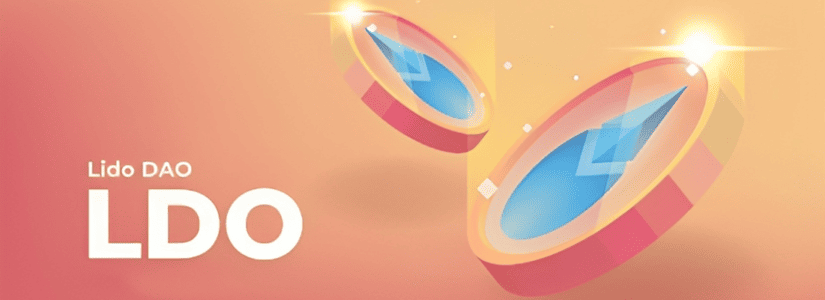Lido is one of the most important liquid staking protocols within the Ethereum ecosystem. Its model allows users to earn rewards from staking Ethereum (ETH) without losing liquidity, through the use of liquid tokens such as stETH and wstETH. This system has enabled it to build a broad user base, ranging from individuals to DeFi platforms seeking to integrate stETH to enhance their returns.
What is LIDO?
Lido is a decentralized protocol that enables users to participate in Ethereum staking without needing to lock their ETH in a validation node. Instead of waiting for long periods to unlock their capital, the protocol issues liquid representative tokens (stETH and wstETH), which can be used to access other services within the DeFi ecosystem.
Staking Model
Lido has developed a highly scalable liquid staking model by leveraging existing Ethereum infrastructure and adapting it into a system that allows users to participate without losing the flexibility of their capital. The technical aspects underpinning Lido include validator node participation, liquid token issuance (stETH, wstETH), and protocol governance through a DAO.
Liquid Staking and stETH Issuance
The process begins with transferring ETH to Lido, which stakes it through a pool of selected validator nodes. The protocol uses a validated node strategy to ensure operational performance and security.
Lido issues two types of liquid tokens: stETH and wstETH.
- stETH: An ERC-20 token representing staked ETH, its amount grows with staking rewards. Users can transfer, trade, or use stETH across various DeFi platforms.
- wstETH: A “wrapped” version of stETH, where tokens do not regularly rebase, making it easier to integrate with certain contracts and platforms that do not handle automatic rebases. It is often more useful in advanced staking scenarios.

What is the Lido Token and What is It Used For?
The Lido token, known as LDO, is a governance token used within its ecosystem. The token gives holders the ability to vote on governance proposals related to the protocol and its evolution, allowing users to influence important decisions such as fund allocation, changes in fees, or modifications to the staking structure. Additionally, the LDO token can also be used as part of incentives within the platform, rewarding participants for their contribution to the ecosystem.
Although Lido’s DAO is a democratic participation mechanism, it has also been the subject of debate due to the concentration of power that has accumulated in the hands of a few participants. This has raised questions about the complete decentralization of the protocol. Despite being a DAO, large funds and staking platforms have disproportionate influence in decisions, which could affect the direction of the protocol and the fairness of the governance system.
Is it a Good Investment?
The decision to invest in the Lido token (LDO) depends on several factors related to risk tolerance and interest in the liquid staking ecosystem. As with any cryptocurrency investment, it is important to consider market volatility and regulatory uncertainty. Lido has gained popularity due to its capabilities and flexibility, making it an attractive platform for those seeking returns without sacrificing the liquidity of their assets.
However, its success largely depends on the growth of the staking market and the adoption of Ethereum 2.0, as well as its ability to maintain decentralized governance. While the token could generate good returns, investing in it carries inherent risks, so it is recommended to conduct thorough analysis and assess risk tolerance before making any decisions
Multichain Expansion
Since its launch on Ethereum, Lido has expanded its presence to other chains like Polygon, Solana, Polkadot, and Kusama. Each case uses the same liquid staking model but is adapted to the specifics of each network. Additionally, wstETH issuance has enabled its integration into multiple networks, including Arbitrum, Optimism, and ZKSync.

How Does LIDO Maintain Security?
Oracle Infrastructure
A critical mechanism for ensuring the reliability of rewards and transactions is the use of secure and decentralized oracles. These oracles allow the protocol to receive external information, such as asset prices or Ethereum network events, reliably and without manipulation risks. Lido employs oracles from multiple providers, improving system resilience and reducing reliance on a single actor for decision-making.
Protection Against Staking Failures
Lido uses an advanced monitoring system that tracks validator and node performance in real time. This monitoring includes automated alerts and preventive measures in case a node begins to show irregular behavior. Additionally, the protocol has an automatic node replacement system to ensure the staking process is never interrupted.
Penalties and Rewards
The protocol implements a structured penalty system to motivate validators to maintain a high level of security. This system applies not only to validators exhibiting improper behavior (such as slashing) but also to those failing to meet operational standards. Simultaneously, Lido equitably distributes rewards among all participants, incentivizing validators to operate honestly and efficiently.
Governance Rewards
Users actively participating in decision-making or voting can receive LDO token rewards, encouraging participation and ensuring decisions are made by an active and engaged community.
User Protection Fund
The protocol has established a protection fund to mitigate the impact of unexpected events. In cases of technical failure, hacking, or slashing-related issues, Lido has a protection fund that can be used to partially reimburse affected users.

Conclusion
Lido has established itself as one of the leading liquid staking protocols on Ethereum, thanks to its flexible and accessible model that allows users to maximize returns while actively participating in network security. Although it must find a superior solution to address criticisms regarding the concentration of staking power, it is a platform with much to offer and has the potential to help drive widespread adoption of cryptocurrencies and blockchain technology










